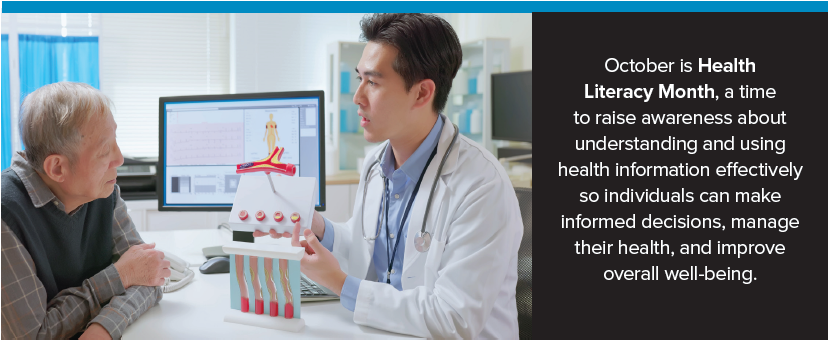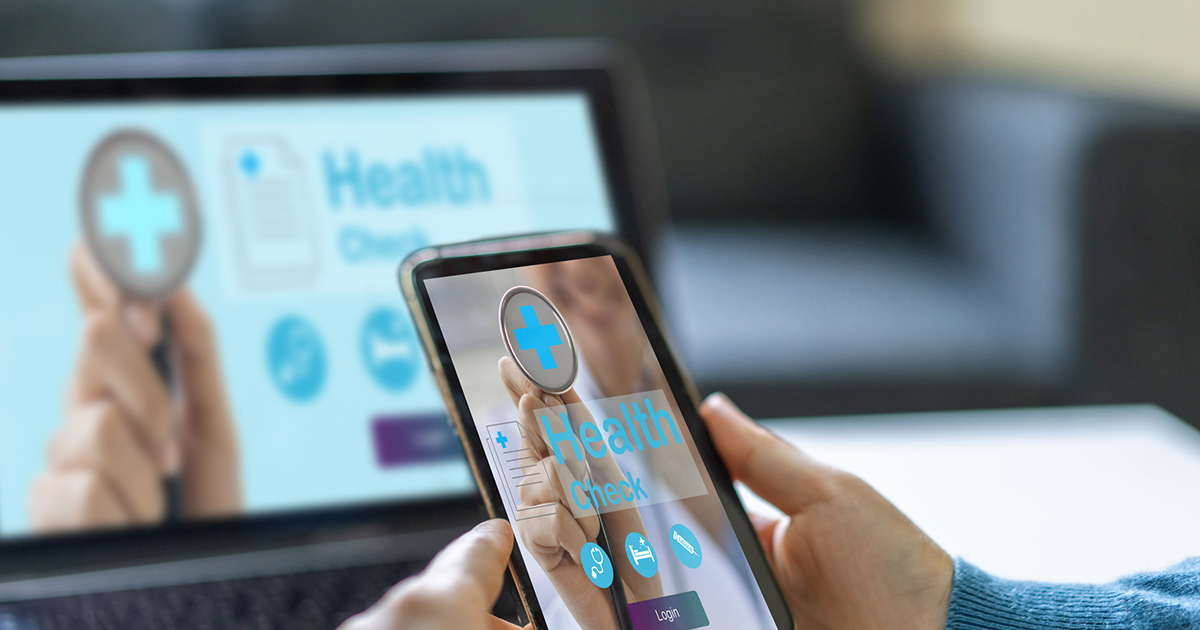October is Health Literacy Month
Each October, we recognize Health Literacy Month – a time to focus on the importance of making health information easy to understand and accessible for everyone. Health literacy is about more than just reading medical terms – it’s about building the skills and confidence to find, understand, and use health information in a meaningful way. Whether it’s knowing how to interpret a doctor’s instructions, navigating insurance paperwork, or choosing healthier food options, health literacy touches nearly every part of daily life [1].
What is Health Literacy?
Health literacy is defined as the ability to access, understand, and apply health information in order to make decisions about one’s own health [2]. This includes tasks like reading prescription labels, interpreting test results, following treatment instructions, or knowing when to seek medical care. Low health literacy can make it difficult to manage chronic conditions, follow treatment plans, or recognize the warning signs of serious illness. In fact, studies show that nearly 9 out of 10 adults in the United States struggle to use and understand health information in some way [2].
What is the Purpose of Health Literacy Month?
The goal of Health Literacy Month is to raise awareness about the importance of clear, simple communication between healthcare providers, patients, and communities. It also encourages organizations – like schools, hospitals, and workplaces – to create resources that are easier to understand. By improving health literacy, people are better equipped to:
- Ask questions and understand medical advice.
- Navigate the healthcare system with confidence.
- Make informed choices about treatments and preventive care.
- Avoid unnecessary hospital visits by recognizing early warning signs.
- Feel empowered to take an active role in their health journey.
- Research shows that stronger health literacy improves health outcomes, reduces healthcare costs, and increases overall well-being [3].

How Health Literacy Education Can Improve Everyday Life
Health literacy skills can transform daily life in simple but powerful ways. For example:
- Managing Medications: Understanding prescription instructions helps prevent dangerous mistakes, ensures medicines work as intended, and improves safety – especially for people who take multiple prescriptions [4].
- Nutrition Choices: Reading food labels and understanding serving sizes can improve diet, reduce risk of obesity, and help manage conditions like diabetes or
high blood pressure [5]. - Chronic Disease Management: People with good health literacy are more likely to monitor symptoms, attend regular checkups, and stick with treatment plans – leading to fewer hospitalizations and better quality of life [6].
- Preventive Care: Knowing when to get screenings, vaccines, or routine checkups can catch problems early, when they’re most treatable and less costly to address.
- Emergency Situations: Understanding how to respond to first aid directions, or knowing when to call for professional help, can make a lifesaving difference.
Using Health Information to Stay on Top of Your Health
Here are a few ways you can take control of your health decisions starting today:
1. Ask Questions – Don’t hesitate to ask your doctor or nurse to explain something more clearly. A helpful phrase is: “Can you explain that in a different way or give me an example?”
2. Use Trusted Sources – Reliable websites such as CDC.gov, MedlinePlus.gov, or MayoClinic.org provide clear, evidence-based information you can trust. Avoid misinformation from unverified social media or blogs.
3. Keep Your Records Organized – Maintain a folder or digital file with your medical records, test results, immunization history, and medication lists. This ensures you and your providers have accurate information when making decisions.
4. Practice Everyday Literacy – Read food labels, track your blood pressure or glucose if recommended, and write down health questions before appointments. Small actions can make a big difference.
5. Stay Engaged – Attend annual checkups, keep up with preventive screenings, and talk with your provider about any changes in your health. Consistent engagement helps you stay ahead of potential health issues.
Takeaway
Health Literacy Month reminds us that understanding health information is not a luxury – it’s a necessity for better health. By improving your health literacy, you empower yourself to make informed choices, stay healthier, and feel more confident in managing your well-being. When people understand their health, they are more likely to take positive action and build stronger, healthier communities.
©2025ProgressiveHealth
References
1. Centers for Disease Control and Prevention (CDC). What is Health Literacy? 2021.
2. National Institutes of Health (NIH). Health Literacy. 2020.
3. Berkman ND, Sheridan SL, Donahue KE, Halpern DJ, Crotty K. Low health literacy and health outcomes: an updated systematic review. Ann Intern Med. 2011;155(2):97–107.
4. Institute of Medicine. Health Literacy: A Prescription to End Confusion. National Academies Press; 2004.
5. U.S. Food & Drug Administration (FDA). How to Understand and Use the Nutrition Facts Label. 2022.
6. World Health Organization (WHO). Health Literacy: The Solid Facts. 2013.

